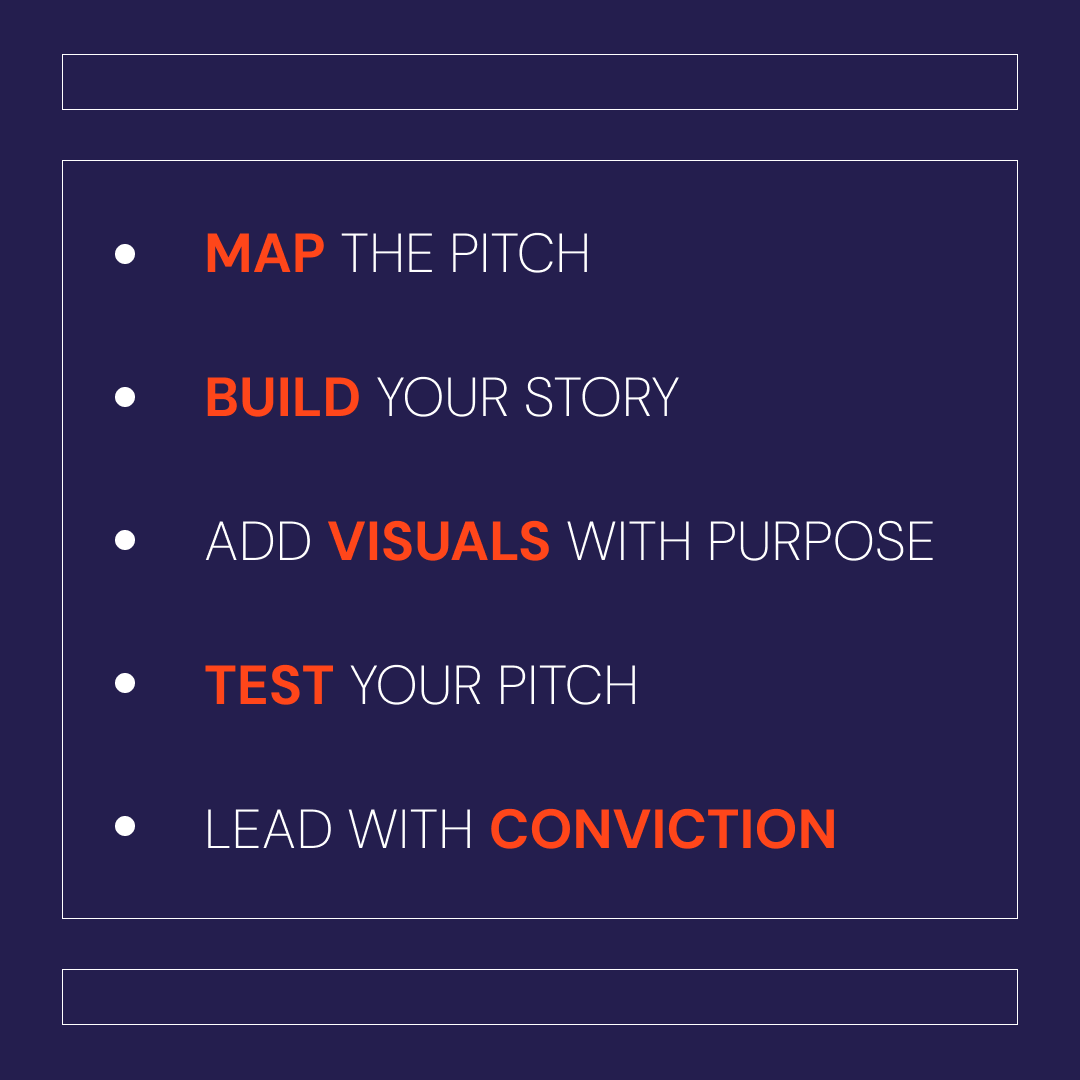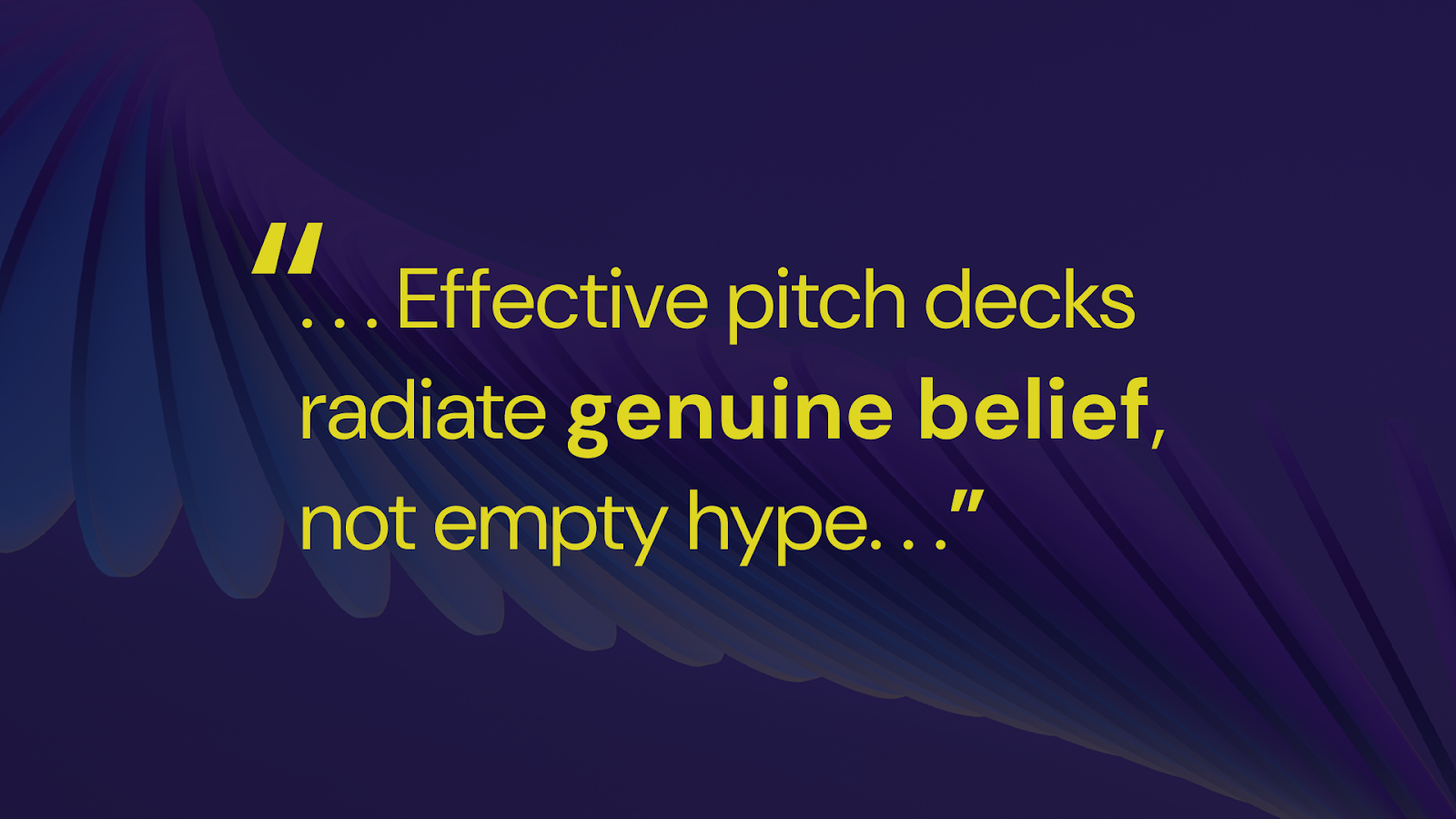
Win The Story, Win the Room

5 Steps to Creating a Winning Startup Pitch Deck That Investors Will Remember

In the frenzied early days of startup life, founders often rush to create pitch decks loaded with slides but lacking genuine insights. The result is typically presentations filled with wishful thinking rather than compelling narratives.
Ask seasoned investors what they remember from successful pitches, and you'll rarely hear praise for formatting or design. What truly resonates is your story and the conviction behind it.
Your pitch deck isn’t just an information dump. It’s a reflection of who you are, why you’re building your solution, and the impact you deliver once you get there. That means before you open PowerPoint or Googling “startup pitch deck templates,” pause and map out the human elements of your fundraising story.
Step One: Map the Pitch Before You Make the Deck
At its core, fundraising is a conversation between people. Too often, founders forget that investors are humans seeking both returns and trust. This is why your first step should focus on alignment, rather than design or data.
Start with these audience-mapping questions:
- Which specific partner are you pitching to?
- What firm do they represent?
- What have they previously invested in?
- How does your startup align with their investment thesis?
The more specific your understanding of your audience, the more effective your pitch will be.
Next, frame your unique value proposition in language that resonates with that investor’s interests or portfolio. Explaining why an investor should care about your product is far more powerful than simply describing features.
Once your positioning is clear, identify your narrative hook. This is the emotional or strategic thread that makes investors lean in. This could be your founder’s journey, a surprising market insight, or a powerful shift that is about to tip your industry in a different direction.
The fourth element is your proof point – evidence validating your startup’s direction and mission. This might be early traction metrics, but could also include:
- Validated market research
- Competitive insights
- User testimonials
- Pilot program results
Finally, be honest about barriers and gaps. What’s missing today that you’ll need to secure before an investor writes a check? Maybe it’s a case study, a technical milestone, or a key go-to-market hire. Addressing these points early refines your narrative and builds credibility.
Ultimately, this visual map becomes the foundation for a pitch deck that practically builds itself. When you’ve clearly identified who you’re talking to and why they should care, your fundraising story flows with purpose.
Step Two: Build Your Fundraising Story with Discipline
Now, forget slides for a moment. Instead, challenge yourself to tell your entire story in just 10 sentences (one per slide) without visuals or clutter. If you can’t communicate your vision in 10 clear statements, adding visuals won’t help!
This constraint isn’t arbitrary. It forces focus and helps you find their narrative core before getting lost in details. Once you have written these 10 sentences, lay them out physically (in Miro, on index cards, or your preferred tool) to see your entire story at once.
Only then should you start layering: beneath each “tile” add supporting information. This might expand to 15-20 slides in your final deck, but that growth will be built on clarity, not noise.
Step Three: Add Strategic Visuals With Purpose
Visuals should enhance memory and emotion rather than distract or decorate. Think of imagery and color as signposts guiding investors through your narrative:
- Use authentic photos to illustrate real-world outcomes
- Implement color breaks to reset attention during transitions
- Let your deck breathe with adequate white space
- Avoid dense, bullet-laden slides that feel transactional
A clean, spacious deck with intentional visual moments invites attention and builds the trust essential for successful fundraising.
Step Four: Test Your Pitch With Experienced Feedback
Once your story takes shape, it’s time to pressure-test it. But don’t immediately dive into actual investor meetings. Instead, pitch to people who have invested before and ask for feedback.
This approach yields two crucial benefits:
- You collect "free advice" from people with relevant expertise
- You enter the investor referral network, often how real funding conversations begin
Filter feedback carefully, using your 10-slide skeleton as a grounding framework. If advice improves clarity or context for your target audience, integrate it. If not, confidently let it go.
Step Five: Lead With Authentic Conviction

No pitch deck, regardless of polish, can compensate for a lack of conviction. Investors quickly detect uncertainty, often within minutes of a presentation beginning.
The most effective pitch decks radiate genuine belief, not empty hype, but confidence built on real proof points demonstrating your commitment to solving a meaningful problem. When you clearly articulate what your business does, why it matters, and how it will succeed, your deck becomes a vehicle for that energy.
Key Takeaways for Startup Fundraising Success
A powerful pitch deck is ultimately a storytelling tool that inspires rather than merely informs. The best presentations are concise enough to "touch the ground," as one of my mentors would say – long enough to deliver essential messages without unnecessary words.
When you've done the foundational work of mapping your audience, crafting your narrative, and building authentic conviction, your pitch deck will reflect that preparation and significantly improve your fundraising outcomes.
Need help crafting your startup's fundraising story? Contact OCTO today for personalized pitch deck guidance.
